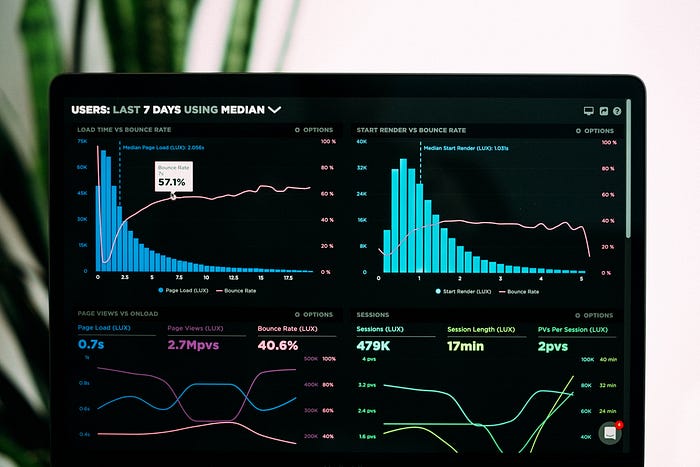Do Not Try To Convince Your Boss To Approve Your Data Science Project
My advice to junior analysts that want to get their hands dirty: don’t ask permission. Do not try to convince. Just do it.
When we have an idea we want to push forward at the workplace, do not try to convince your superiors to approve it.
We are analysts, researchers. Our intent is not to persuade, but to show clarity through data.
Through clarity we allow our peers to see what we see, and often even more. This is where our analytical thinking manifests outside of our coding and project management activities.
As data people, we have the chance to impact our entourage, being the company we work with or our teammates, not only with our hard work but especially by being critical thinkers in our everyday life.
1. Do Not Pitch — Demonstrate

Do not convince people of anything. Show them.
Gather data, and evidence that support your hypotheses and create a narration around it. Your efforts should be enough to receive approval without asking for anything.
Demonstrate that your idea can and will make a difference if allowed to grow and bloom. Make it crystal clear that not implementing your idea will be a mistake. A mistake that will cost them money. Make sure your narration covers the at least following points.
- Detailed Description
Your effort to gather evidence can be potentially void if you aren’t able to communicate what you want to do in the first place. Be thorough. Take your time. Think about the words and the pace carefully. This is where you put the facts in front of your audience and describe your evidence.
- Expected Results
Have your data speak through your statistical analyses. Use tests, like a t-test or any other idea you can come up with to provide solid ground for your hypotheses. Document expected results with simulations if possible.
- Costs
This is where your boss’ / investors’ attention will be peak. Be super clear about the numbers.
- People
Be clear about the people that you are planning on involving, and their expected committment. You don’t want to pull in people from team A without valid replacement for their expertise. This is often a reason for rejection.
- Time
Dedicate a couple of slides on the roadmap and deadlines. Put down a Gannt chart and don’t be afraid to come up with your own timeline: it’s never going to be followed in any case.
2. Build A Demo

This is where many fall short. You got to impress whoever has decision power to approve or reject your proposal.
You do so by being a great storyteller. And by bringing in toys to play with. With a usable demo, I believe the chances of making an impact are way higher.
As a data scientist working in a top company in digital marketing, I have treaded various paths and achieved good results with the following approaches:
Model + FastAPI / Flask + Streamlit
Train your model and use FastAPI to create your endpoints. What is super cool about FastAPI is that it automatically creates state-of-the-art documentation pages for you. Plus, it’s very easy to configure. And it’s frigging fast. You can read more info on FastAPI here.
Streamlit allows data scientists and analysts to create beautiful interfaces in no time, all in Python. There are many components to choose from — the limit is your creativity.
With FastAPI and Streamlit you can really impress your audience if your storytelling is on point.
Model + Excel
Excel is a very underestimated and hated tool. For good reasons, I might add (extremely slow under certain circumstances and literally unusable).
That being said, it is fairly easy to setup a small VBA script to access the endpoint directly from the sheet. Setup your functions so that a specific cell contains the input and done. Your model now feeds an Excel sheet and can be used by no-coders.
I have often created a “wow” effect simply by allowing non-technical users to achieve better results with a tool like Excel that they use on a regular basis.
Model + PowerBI
Business analysts leverage tools like PowerBI and Tableau and Qlik every day. I personally have experience with PowerBI and it is definitely an option to consider for model deployment depending on your stakeholders and other conditions.
3. Show Your Character

I believe a solid 80% of your performance is not delivered through data, rather by your character and personality.
Don’t be afraid to be bold and confident when displaying your analyses. If you have done your homework well, all the questions that are going to come up will be easily answered. If that is not the case, then be honest and say that you can’t reply in that moment and that you will follow up via email or in a later conversation.
Once you get the hang of finding solid evidence in your data, it will become easier in time to focus on yourself and your attitude rather than on the results per se. They will speak with their own voice, giving you the space needed to improve your communication skills.
On this note, I would like to recommend a book that taught me much about communicating data concepts to my audience — Storytelling With Data by Cole Nussbaumer Knaflic. Just an incredible book any analyst and communicator should read (ref link to Amazon).
4. Make Friends

Individuals that think your idea is cool are even cooler. Leverage their rank, role and expertise in the company to improve your chances of approval. There’s nothing wrong with it, because in doing so you are benefitting not only yourself, but potentially all of them that are sustaining you during this moment.
Ask them to ask specific questions during the presentation. This is not cheating: you can use these interventions to move from one point to the other in your narration, and can trigger discussion around hot topics. Understanding these topics is important, so make sure you have done your homework appropriately before doing this.
Your solution is built for them in mind, right? The whole company should benefit from approving your idea, remember that.
5. Leverage Data Already In Your Possession

Your research should not be exclusively exogenous (outside of your office, in this case). Leverage data that comes from your company, clients or colleagues and use this before doing research on the web.
For instance, I often gather in-house sentiment around an idea by using Google Forms. I simply ask my peers a couple of questions that help me understand if I am on the right track or not.
If I am, I have some internal validation I can use in my presentation. Otherwise, I will pivot and see if my idea can be valuable from another angle. If that again is not the case, I will simply drop the idea. This leads to the next and final point.
6. Don’t Get Attached To Your Idea

Yes. I know that you think that your idea is your little child, and that you should feed it and nurture it.
Nature is relentless, though. And this happens only in your mind. I myself have renounced to several ideas that initially kept me awake multiple hours at night.
Let go of ideas that are rejected, but only for documented reasons. If there is doubt that your idea is bad, keep working on it in your free time and explore the hypotheses in another context. The more your nurture an idea, the more you’ll give it the chance to bloom under the correct circumstances. This should not make us blind to reality, though.
If the idea is rejected for good reasons, then let it go. Don’t attach to them, as you will cut loose many of them over your career. The sooner you accept that most of your ideas are bad, the sooner you’ll start building something great around that rare great idea.

